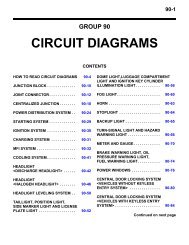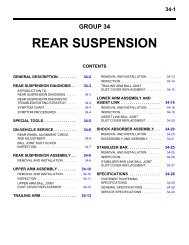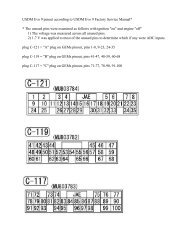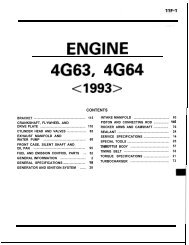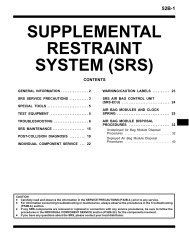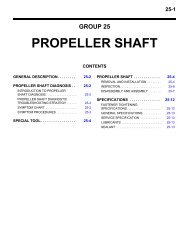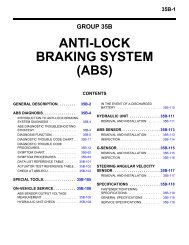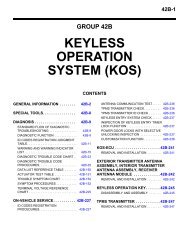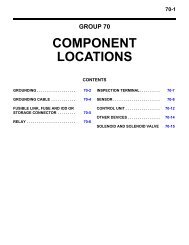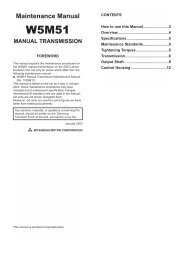Merlins Ralliart and EvoX TUNING GUIDE Version K.pdf - EvoScan
Merlins Ralliart and EvoX TUNING GUIDE Version K.pdf - EvoScan
Merlins Ralliart and EvoX TUNING GUIDE Version K.pdf - EvoScan
- No tags were found...
You also want an ePaper? Increase the reach of your titles
YUMPU automatically turns print PDFs into web optimized ePapers that Google loves.
MERLINS RALLIART & EVOLUTION-X <strong>TUNING</strong> <strong>GUIDE</strong>SECTION 7 – MIVEC <strong>TUNING</strong>7.01-4B11 MIVEC <strong>TUNING</strong> INTRODUCTIONThe <strong>EvoX</strong> <strong>and</strong> RALLIART, equipped with the 4B11 engine, has variable cam timingon the intake <strong>and</strong> exhaust cams. It effectively works like an electrically adjustablecam-wheel <strong>and</strong> the values in the MIVEC tables are degrees of crank rotation. Thus20° in the table will correspond to 10° of camshaft rotation.Values for the inlet cam can be entered from 0° to 33.1° in the table. You can inputvalues beyond 33 in the table but the advance remains at 33°.Values for the exhaust cam can be entered from 0° to -13.8° in the table. You caninput values beyond -14 in the table but the advance remains at -13.8°.There are four MIVEC maps, two for inlet <strong>and</strong> two for exhaust. Each cam has awarm-up map (map #2) <strong>and</strong> a normal operating or hot map (map #1). The hotmaps are in use when the engine temperature is above 77°C.In the meantime, a lot of DIY tuners have experimented with cam timing <strong>and</strong> haveposted their own maps <strong>and</strong> what they have found out on the web. Some of these<strong>and</strong> the factory maps for the various models will be discussed.Previous tuning with the MIVEC equipped Evo9 has shown that aggressive MIVECadvance angles when the engine is cold will produce an edgy <strong>and</strong> irritating drivingcharacteristic. To avoid this, set the cold map to less advance in the low rpm lowload areas.MIVEC maps tend to follow a similar pattern: cam timing advance is set very lowfor the idle area, set low in the lower rpm, but as the engine speed increases camtiming is advanced. Cam timing advance reaches its peak around 3500-4000 rpm<strong>and</strong> then cam timing is gradually brought back close to zero by 6500-7000 rpm.There are good reasons for this general topography. Adding advance in the idlearea will cause the engine to have a loopy idle <strong>and</strong> there is no real benefit forhaving advance here. Advance in the idle area will also increase emissions.The engine will exhibit a much more sparkly light throttle response in the 1000rpmto 2500rpm range if advance is progressively added as rpm <strong>and</strong> load is increased.However, if the advance transitions across the table cells are too radical, the enginewill exhibit some degree of jerky response, especially when cold or during warm-up.So the rate of advance needs to be tuned to suite the application <strong>and</strong> drivingcharacteristics, especially if using hotter cams. There may be some knock forexample, so logs should be checked.REV: 0.K merlin@three.com.au Page 63 of 134




